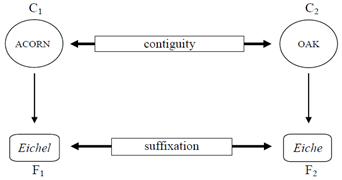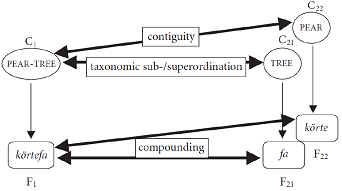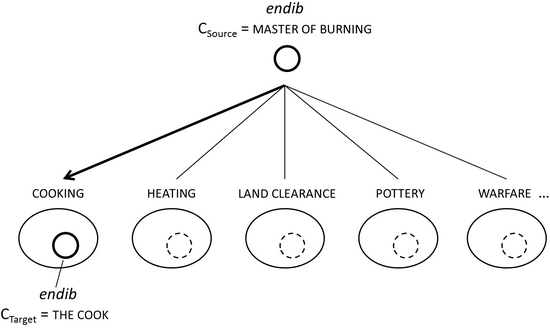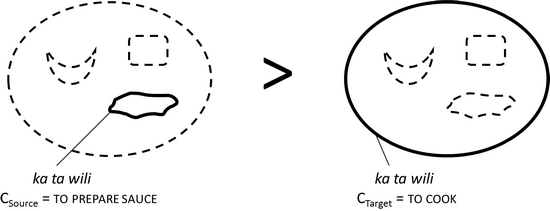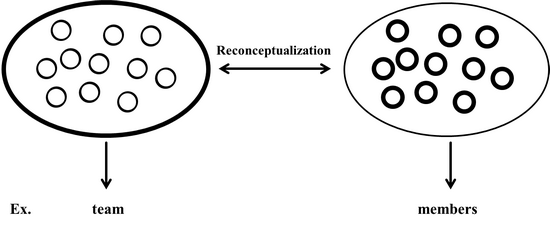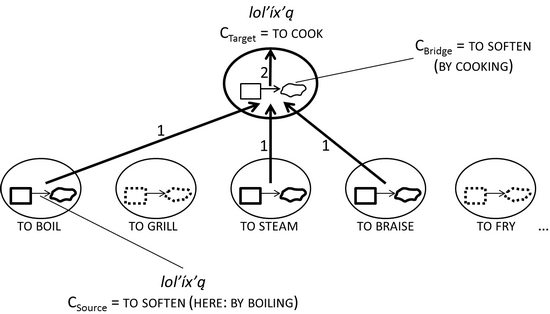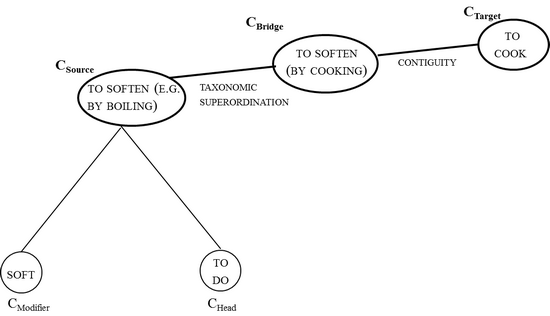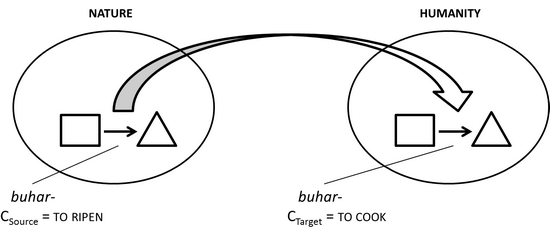A second aspect addressed by Plato and of renewed interest since Ferdinand de Saussure is relative motivation, that is reduced arbitrariness. A complex word such as cupboard displays reduced arbitrariness because the language user can easily discern its elements cup and board and explain their relations to the compound concept CUPBOARD. Since research of this kind always looks inside a complex word (compound, derivation etc.), I will call it research on segmental motivation. In a second step, this will provide the basis for reflections on holistic motivation.
To give an example right from the start, motivation does not end with the segmental observation that originally, cupboard indeed referred to a sort of board that was used to keep cups (resulting in conceptual links between CModifier, CHead and CSource, see Figure 1). Rather, cupboard as a whole has been used to express new target concepts: From its literal use as CSource BOARD FOR CUPS AND OTHER VESSELS, it has developed to CTarget 1 CABINET WITH SHELVES, FOR KEEPING CUPS, DISHES and, later on, to its today’s more general sense CTarget 2 CABINET WITH ANY SORT OF CONTENT (see OED, s.v. cupboard, n.). The compound thus has undergone a first holistic conceptual shift from part to whole within the kitchen (BOARD > KITCHEN CABINET) followed by a second holistic conceptual shift that can be identified as taxonomic superordination since cupboard arrives at a more general meaning (KITCHEN CABINET > CABINET).
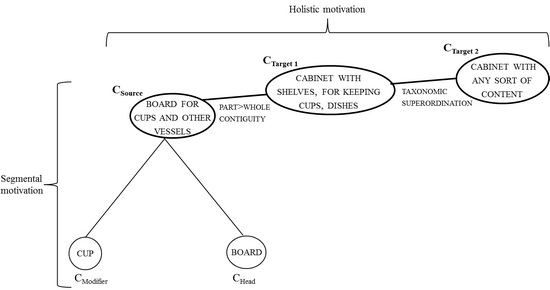
Figure 1 Segmental and holistic motivation of the concept CUPBOARD (inspired by Geeraerts 2002: 456)
This paper attempts to show that such holistic shifts can reasonably be integrated into research on motivation when the starting point is the respective target concept (e.g. KITCHEN CABINET or simply CABINET above). A complex expression of this target concept such as cupboard then needs not only to be checked for its motivating parts cup and board, but also for the reason why a linguistic community has chosen precisely cupboard to express (KITCHEN) CABINET. To investigate this type of motivation in the COOKING domain, I have carried out a questionnaire study among language experts, asking them for complex expressions of the target concepts TO COOK and THE COOK.2 Or to put in terms of Figure 1: I set the rightmost concept of Figure 1 as a fix starting point and kindly asked my language experts to give me the literal source concept of their respective language. I then analyzed the conceptual relations between CTarget and CSource.
